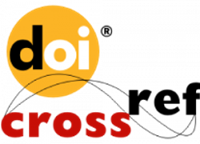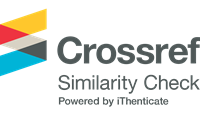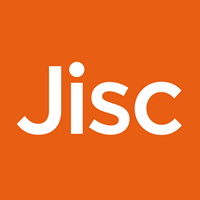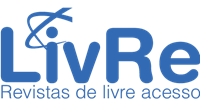Educação em Direitos Humanos no currículo: ensinando e aprendendo por meio de portfólios
Resumo
O artigo apresenta a análise documental de um corpus constituído por 95 portfólios elaborados em uma disciplina de Educação em Direitos Humanos (EDH) ofertada em um programa de pós-graduação stricto sensu. Portfólios foram utilizados como estratégia metodológica para abordar conteúdos relacionados aos Direitos Humanos (DH), numa perspectiva interdisciplinar e transversal, priorizando a percepção destes direitos a partir da realidade. No início da disciplina, durante 5 semanas consecutivas, os estudantes elaboraram portfólios atendendo à proposta de trazerem algum Direito Humano com o qual se depararam por meio do veículo por eles escolhido, por exemplo: notícias, músicas, filmes, imagens, dentre outros. Trata-se de uma pesquisa aplicada com abordagem qualitativa, desenvolvida por meio de análise documental, cujos objetivos foram: analisar os DH presentes nos portfólios; levantar os veículos utilizados para identificar os DH. A análise do material foi realizada por meio da categorização dos Direitos Humanos e dos veículos. Os resultados demonstram que a maior parte dos portfólios analisados, 65%, referem-se aos direitos civis e políticos. Em 24% dos portfólios estão os direitos econômicos, sociais e culturais (DESC). O terceiro grupo, com 11% de portfólios, destaca direitos difusos e coletivos, que se caracterizam por se destinarem a um grupo, categoria ou conjunto específico de pessoas que tem algum tipo de vínculo, algo em comum. O veículo mais presente dentre os trabalhos analisados foram os que divulgam notícias, com 44% de portfólios; em seguida, os veículos relacionados à arte como imagens, músicas, quadrinhos e poemas com 41% dos portfólios. O uso de portfólios favoreceu a percepção e a discussão dos Direitos Humanos de maneira contextualizada, indicando também os diferentes veículos que podem contribuir para a abordagem destes conteúdos em sala de aula.
Downloads
Referências
Brasil. Comitê Nacional de Educação em Direitos Humanos. (2006). Plano Nacional de Educação em Direitos Humanos - PNEDH. Brasília, DF: Ministério da Educação, Unesco.
Brasil. Secretaria de Direitos Humanos da Presidência da República. (1996). Programa Nacional de Direitos Humanos, PNDH. Brasília, DF: Secretaria de Direitos Humanos da Presidência da República.
Brasil. Secretaria de Direitos Humanos da Presidência da República. (2002). Programa Nacional de Direitos Humanos, PNDH 2. Brasília, DF: Secretaria de Direitos Humanos da Presidência da República.
Brasil. Secretaria de Direitos Humanos da Presidência da República. (2010). Programa Nacional de Direitos Humanos, PNDH 3. Brasília, DF: Secretaria de Direitos Humanos da Presidência da República.
Dewey, J. (1959). Democracia e educação. São Paulo, SP: Companhia Editora Nacional.
Dewey, J. (1978). Vida e educação. São Paulo, SP: Melhoramentos.
Galvão, S. F. O. (2014). Consciência. In I. C. A. Fazenda, H. P. Godoy (Ed.), Interdisciplinaridade: pensar, pesquisar, intervir. São Paulo, SP: Cortez.
Gil, A. C. (2002). Como elaborar projetos de pesquisa. São Paulo, SP: Atlas.
Klenowski, V. (2004). Desarrollo de portfolios: para el aprendizaje y la evaluación. Madrid, ES: Narcea.
Ministério da Educação, Conselho Nacional da Educação, Secretaria de Educação Básica, Secretaria de Educação Continuada, Alfabetização, Diversidade e Inclusão. (2013). Diretrizes Curriculares Nacionais Gerais da Educação Básica. Brasília, DF: Ministério da Educação.
Organização das Nações Unidas [ONU]. (1948). Declaração Universal dos Direitos Humanos. Genebra.
Ranghetti, D. S. (2014). Conceito. In I. C. A. Fazenda, & H. P. Godoy (Ed.), Interdisciplinaridade: pensar, pesquisar, intervir. São Paulo, SP: Cortez.
Resolução nº 1, de 30 de maio de 2012. (2012, 30 maio). Estabelece Diretrizes Nacionais para a Educação em Direitos Humanos. Conselho Nacional de Educação Conselho Pleno. Diário Oficial da União, Brasília.
Severino, A. J. (2007). Metodologia do trabalho científico. São Paulo, SP: Cortez.
Teixeira, A. (1978). A pedagogia de Dewey. In J. Dewey. Vida e educação. São Paulo, SP: Melhoramentos.
Tosi, G., & Zenaide, M. N. T. (2016). A formação em direitos humanos no ensino superior no Brasil: trajetória, tendências e desafios. In A. M. Rodino, G. Tosi, B. Fernándes, & M. N. T. Zenaide (Eds.), Cultura e Educação em Direitos Humanos na América Latina (p. 107-144). João Pessoa, PB: CCTA.
Yus, R. (1998). Temas transversais: em busca de uma nova escola. Porto Alegre, RS: ArtMed.
This work is licensed under a Creative Commons Attribution 4.0 International License.
DECLARAÇÃO DE ORIGINALIDADE E DIREITOS AUTORAIS
Declaro que o presente artigo é original, não tendo sido submetido à publicação em qualquer outro periódico nacional ou internacional, quer seja em parte ou em sua totalidade.
Os direitos autorais pertencem exclusivamente aos autores. Os direitos de licenciamento utilizados pelo periódico é a licença Creative Commons Attribution 4.0 (CC BY 4.0): são permitidos o compartilhamento (cópia e distribuição do material em qualquer suporte ou formato) e adaptação (remix, transformação e criação de material a partir do conteúdo assim licenciado para quaisquer fins, inclusive comerciais).
Recomenda-se a leitura desse link para maiores informações sobre o tema: fornecimento de créditos e referências de forma correta, entre outros detalhes cruciais para uso adequado do material licenciado.














































